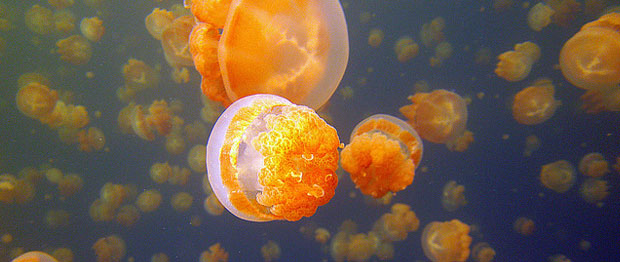4 best places to see exotic wildlife abroad

Instead of watching unique and exotic animals on TV, maybe it’s time to consider taking a holiday to see them all in person. Spine-tingling wildlife can be found all around the world, and there are endless opportunities to see these animals in person. Go beyond your television and visit any of Cover-More's best places to see exotic wildlife for a truly different holiday.
Kalahari Desert, Namibia
Perhaps one of the largest and most diverse spots on this list, the Kalahari Desert does not disappoint in delivering a rich and diverse population of wildlife that includes at the very least 320 species of mammals and birds. Keep your eyes peeled for the large mammals that the Kalahari is known for: lions, cheetahs, leopards, hyenas, giraffes, wild dogs, zebras, impalas, baboons, elephants, rhinos, buffalo and more. Or, if smaller mammals are more your speed, look around and you’re guaranteed to see large colonies of meerkats all over the place.
Danum Valley, Borneo
Sabeh’s largest protected Lowland Rainforest is Danum Valley Conservation Area. It covers close to 44,000 hectares of undisturbed tropical flora and fauna. Within the conservation area, there are more than 340 species of birds, 124 species of mammals, 72 species of reptiles and 56 species of amphibians. While it isn’t as easy to see animals here as it is in the middle of the desert, you will still be able to see a wide variety. Most commonly spotted are mouse der, sambar deer, civets, hornbills and macaques. If you’re lucky, you may even come eye-to-eye with pygmy elephants and orangutans.
Jellyfish Lake, Palau
Dipping below the waves for a second, a prime spot for a unique wildlife experience is Jellyfish Lake in Palau. As you might expect, this lake is home to an incredible amount of jellyfish—10 million to be exact. The lake is less than 6 hectares in area and because the jellyfish have no natural predators, they have evolved without being poisonous. Throughout the day, the jellyfish follow the sun making a 1km trek across the lake every single day. Travel during the dry season, December through April, and swim lazily through the waters as you surround yourself with the golden jellyfish without fear of getting stung.
Yellowstone National Park, Wyoming, USA
Most notably a destination for those looking to be stunned by natural wonders, whether it’s exploding geysers, untouched wilderness, spectacular lakes and thousands upon thousands of miles of hiking trails, Yellowstone is also a fantastic spot to see wildlife in their natural habitats. There are over 400 species that call Yellowstone home, and even though close to 3 million visitors come through Yellowstone’s gates a year, if you travel just two miles off a road, you’ll leave a wide majority of the tourists in your dust.
Hiking in the backcountry (once you get the appropriate permits, of course) lets you bunk down and sleep under the stars right beside wolves, grizzlies and other animals. Get lost in the wild of Yellowstone and get up close and personal with the spine-tingling wildlife that live their lives in this National Park.
Feeling inspired? Sign up to see some of the planet’s most amazing animals on a wildlife holiday. Before you leave, be sure to purchase an adventure sports travel insurance plan from Cover-More New Zealand. Protect yourself and your travelling companions from the unexpected and spend your holiday ogling the animals instead of stressing out about what could go wrong.